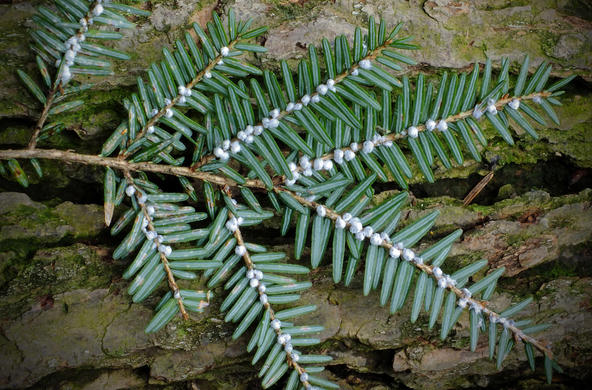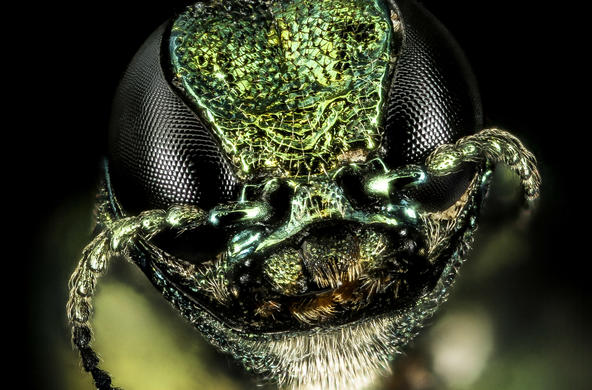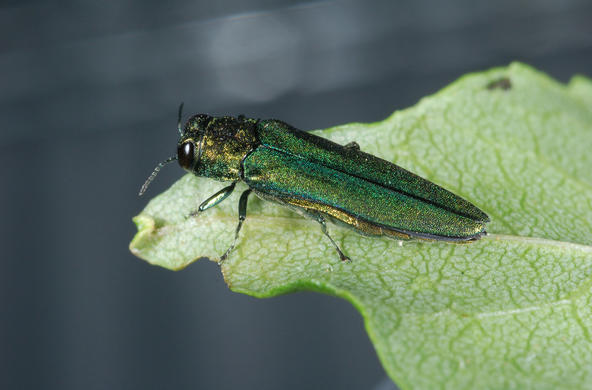When Asian longhorned beetles were first discovered in Worcester, Massachusetts in 2008, it came as a shock. “I knew our life was going to change,” said Patty Ruffini, then the United States Department of Agriculture’s State Plant Health Director for Massachusetts, Connecticut, and Rhode Island, in an interview for Worcester’s Telegram and Gazette.
The beetles likely arrived in Worcester burrowed in wooden shipping pallets from Asia. They are voracious tree pests, and are particularly fond of the maples that lined Worcester’s streets. In the 11 years since that initial discovery, over 35,000 trees have been removed from Worcester in an attempt to eradicate the outbreak and to keep it from spreading into nearby forests. “The neighborhoods will never look the same,” said Worcester resident Virginia Ryan to the Telegram. After the street trees were removed, she recalled, “It looked like a war zone to me. You just saw telephone poles.”

Worcester is not alone. Imported insects and diseases have devastated trees in parks, yards and along streets in cities, towns and villages throughout the country. The emerald ash borer, another Asian insect discovered in Michigan in 2002, is the most destructive pest ever imported into the United States. It is killing forest and city trees throughout the eastern half of the country, and has spread as far west as Colorado. It has the potential to kill all of the ash trees in North America. By some estimates, it will cause over $12 billion in damage before it is done.
Research has shown that municipal governments and homeowners bear the brunt of the over $4 billion annual cost of imported forest pests (see graph below). The costs mount because responses – either removing trees or treating them – are expensive. Plus, homeowners lose property value when mature trees on their property die.

The full value of city trees is not captured by the simple costs of removing them. Trees cool the air, absorb air pollution, reduce stormwater runoff and provide habitat for birds and other urban wildlife. And so, many cities, towns and villages are investing heavily in green infrastructure, like tree planting – an investment which is put at risk every time a new pest is imported into the country.
Local residents know that trees can reduce the stress of urban life, but they may not be aware that losing trees can harm their health. Recent studies in Midwestern cities show that rates of hospitalization and death from cardiovascular and respiratory ailments increased in the wake of city tree loss due to emerald ash borer infestations.
Imported forest pests are unintended byproducts of global trade; they enter the country via two main pathways. Solid wood packaging material, such as pallets and crates, allow insects like the emerald ash borer and Asian longhorn beetle to stowaway among goods loaded into container ships. While an international treaty mandates that wood packing materials be treated to kill embedded pests, treatment is often insufficient and thousands of infested shipments pass through our ports each year.

Nursery stock imported for landscaping is another important conduit for invasive pests. Exporting countries must certify that plants are ‘pest-free’, and they must pass through U.S. inspection stations when they arrive. Unfortunately, many insects and diseases are not easy to spot, making visual inspection a weak defense.
Because many ports and airports are in cities, urban forests are on the frontlines. If pest outbreaks in urban forests are not eradicated quickly, they can allow new invaders to become established and spread to other areas. Once pests gain a foothold, they are often impossible to stop. Effective monitoring and eradication efforts in urban forests are essential for protecting the entire country from invasive pests.
The best defense is preventing pests from entering the country in the first place. This responsibility falls squarely in the lap of the USDA’s Animal and Plant Health Inspection Service (APHIS).
APHIS needs to get tough with importers and increase penalties for noncompliance with the current wood packaging regulations. APHIS must restrict importation of live plants that are most likely to transmit pests to native trees. The USDA should beef up its monitoring of urban trees and enlist the help of city foresters, arborists and residents to spot new outbreaks.
These commonsense measures by the federal government could produce widespread benefits and help save local trees and the many services and benefits they provide. City officials should speak with a united voice to advocate for stronger defenses against imported forest pests.








